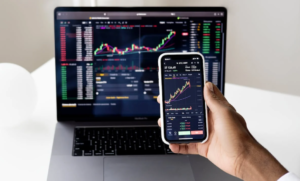What all businesses should be doing post-pandemic?

When Marvel filed for bankruptcy in 1996, it was in shambles. Marvel has been a major player in the comic-book universe. With its iconic character including Spider-Man and Captain America, it witnessed stellar success. However, in the late 20th century, the comic market crashed and Marvel went broke. Many were sure that Marvel’s days were over. But, after restructuring their approach, the comics were turned into movies and Marvel was able to bounce back. Today, Spider-Man, Iron Man, the Avengers are some of the most groundbreaking franchises. Making this comeback required redesigning the model, formulating future aspirations and innovation.
Businesses around the world are in disorganisation today. Our world has a long history of devastating pandemics, that threatened to push humans on the edge of a precipice looking down devastation and death. Smallpox is one such example. It spread from Asia and Africa to parts of Europe until the fifteenth century due to crusades.
The sixteenth century was marked as the time when the European settlers and the widespread African slave trade brought smallpox to the Americas. The infection decimated more Aztec and Inca people than the Spanish Invaders, helping wipe out those empires. This lethal virus accounted for about 400,000 deaths per year in Europe towards the end of the eighteenth century. Globally, towards the twentieth century, the estimated deaths reached 300 to 500 million and this number exceeds the mortalities in both the world wars.
This is to say that some of the greatest public-health crises to threaten the world over a century ago are a stark reminder that humankind remained at the mercy of nature; tens and thousands lost their lives. Today, history repeats itself. The COVID-19 pandemic is escalating at a disturbing rate leaving thousands infected and forcing economic activity to stagnate as a result of persistent restrictions on movement. The global economy has experienced the largest shock in decades. How we work or live has changed in ways that will alter our behaviour post-pandemic too. This change is inevitable so McKinsey & Company called it preparing for the “next normal”.
Table of Contents
Survival of the Most Adaptable
Firstly, it is essential to understand that even before COVID-19, trade wars, the UK exiting the European Union had caused tremendous uncertainty for many industries. With the pandemic, came an era of untimely shutdowns, remote work, and worse, closures. According to the Guardian, over 17,500 chain stores permanently exited the market in the UK due to the pandemic. However, despite a drastic increase in COVID-19 spurred closures, a great number of businesses have been able to effectively transition to a new operating model whilst maintaining utmost safety standards for employees and customers. Reinventing your business as more resilient and adaptable is the key to staying in business. But how?
Considering that the economic turmoil and the sudden disruptions in the marketplace and supply chains have dramatically impacted consumer preferences in the near and for the far future, hence, only businesses that can effectively respond to such disruptions can prosper. Simplifying the enterprise architecture to do away with any unnecessary complexity will boost response time and allow for effective leadership. With the growing dynamics and complexity of its environment, the business is constantly exposed to increasing intricacy. Therefore, the simplification of operation models is becoming progressively crucial.
How to get started?
Rebuilding the enterprise architecture would require ideating the future vision, goals and outcomes. Moreover, it means highlighting the value and meaning the organisation aims to accomplish. We can rebuild and thus simplify business architecture by:
- Indicating future work aspirations and outcomes by challenging leadership and the workforce
- Acknowledging the whole host of technological competencies that exist to transform work and using them strategically to enhance human capacities.
- Prioritizing work outcomes and setting SMART goals to optimise the flow of work (SMART stands for Specific, Measurable, Attainable, Relevant and Time-Bound).
To reiterate, simplifying the organisational structure to eliminate unintended intricacy and fostering focus is at the crux of becoming adaptable. So, working to develop a non-hierarchical way of organizing your workforce, removing departments or systems that operate in isolation from others, help simplify the decision-making processes to become more effective.
Lastly, an integral part of redesigning the business model is to make an effective digital transition. According to a McKinsey & Company report the pandemic has caused a massive surge in e-commerce with total sales increasing by two to five folds across eight nations constituting 45 per cent of the global population. They are China, France, Germany, India, Japan, Spain, the United Kingdom, and the United States of America.
Specifically for the UK, total retail sales have shot up from 20 per cent in January 2020 to 36 per cent a year later. Additionally, in McKinsey’s November 2020 sentiment survey, over half of the entire consumer population explained that they considered continuing some of their newfound shopping behaviours post-pandemic. Meaning that food delivery, workouts from home and digital entertainment are here to stay.
Human Dimension to Work, Workplace and Workforce
Throughout this worldwide pandemic, the changes we’ve had to accommodate have not been universal. Every individual has had their struggles and they have dealt with them differently one another. However, there has been a pervasive shift in the employee-employer dynamic. To be brutally blunt, they have begun expecting more. Now that firms have begun assessing the impact of this disruption, it is clear that everything that was once associated with the workplace is experiencing a major shift, and skill and talent management cannot remain to be isolated.
The yearly Deloitte Human Capital Trends survey indicated that for a business to progress consistently in a disrupted landscape, it is essential for their employees’ ability to upskill, adapt, and assumer new roles. Nevertheless, merely 17 per cent of executives feel their workforce is ready to do this. Furthermore, 96% of respondents answered that businesses are responsible for employees’ wellbeing but 79% said that their well-being is not effectively integrated into the workforce. To bridge the gap requires a holistic approach. Such workforce experience places the focus on the employee and worker, supports their wellbeing, and is anchored by trust, humanity and inclusivity. Businesses need to prioritise wellbeing and flexibility to meet the diverse needs of the workforce.
How to get started?
The definite shift towards this reestablished focus on talent management corporate responsibility than the primary responsibility of Human Resources calls for employers to adopt new perspectives; they include:
- Redefine the enterprise mindset to prioritise a human approach to work, workplace and workforce. This would require strategic prioritisation, coordination and collaboration in the organisation.
- Leaders across departments are accountable for overseeing functions, creating clarity of purpose, ensure alignment of mission, what outcomes it will bring, and why it exists.
- A careful assessment of traditional practices in the workplace that suppress engagement relating to development and learning.
- Lastly, ensure employees are empowered with meaningful tasks that make them feel they are contributing to the common shared purpose.
In other words, it is not the cutting edge technology or the advanced tools that make the business more resilient but the way your organisation empowers employees to apply their ingenuity, creativity and strategy.
Responsiveness to Stimuli – Route to Financial Recovery
The new normal will allow for recovery in corporate investment. Although, the magnitude of that recovery will depend on resources the business can use to finance the required investment, drive to convert those resources into tangible capital. Companies that would make it out of the pandemic with massive deficits will be faced with interest payable that may shrink the revenue. This also implies that the firm will have less capacity to borrow for the future. These aspects will largely impact investment and recovery.
The first step leading to the path of recovery is to begin by examining the damage. Look at your competitors and the market as a whole. Establish safety guidelines that the organisation will stick to. Research as to what is necessary by the local and governing bodies and make an action plan around it. Anticipate potential costs relating to this action plan.
Next, rework a revised budget and account for the time the business would need to bounce back. Then, calculate how much funding you’d need to recover. Educate yourself about relief funds, loans for startups and small businesses, Paycheck Protection Program that could be of some consolation. If your country has programs in place to support your business, you must be aware of these options.
Due to COVID-19, we live in a world where physical proximity and contact have to be minimised drastically, digital payments have become a necessity for all. As a business owner, amid this new era of digitisation, make safe and secured payments through Omnipay’s Payment Gateway.
The payment gateway allows your business to accept electronic payments and be process debit and credit cards. It is highly effective since it integrates with your online needs or boost payments through payments through your phone, pay by link and touchscreen card terminals for your offline needs.



